
General management
More information at CDSPCystinosisAlthough diligent use of a cystine-depleting agent as specific therapy has been shown to delay renal deterioration, enhance growth and delay onset of the late complications of cystinosis, cystine-depleting therapy alone cannot fully abrogate the debilitating symptoms that arise especially in older patients.1
Successful management of these systemic complications requires a wide range of supportive interventions and treatments that may include feeding tubes, parenteral feeding, antacids, insulin, thyroxine, testosterone supplements, angiotensin-converting enzyme (ACE) inhibitors, eye drops and growth hormone, in addition to kidney transplantation and the associated immunosuppressive therapy.2,3
Supportive treatments for patients with cystinosis1-3
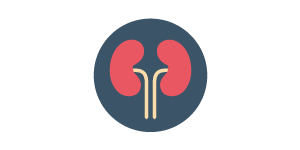
Renal
Fluid and solute replacement lndomethacin to lower the glomerular filtration rate (GFR) and reduce urine volume (controversial) ACE or angiotensin receptor blocker (ARB) inhibitor therapy to reduce albuminuria/proteinuria

Diet and nutrition
Gastrostomy tube placement or total parenteral nutrition may be useful during early development to ensure adequate intake Phosphate and vitamin D for rickets

Endocrine
Growth hormone supplementation may be considered in cases of short stature
Thyroid hormone replacement may be required
Testosterone replacement for male patients is frequently indicated
Insulin treatment may be considered in patients who develop diabetes
Without specific treatment, almost all patients with cystinosis will develop end-stage renal disease (ESRD).4 Before cystine-depleting therapy was introduced, children with nephropathic cystinosis reached ESRD by the age of around 10 years.1 Since then, cystine-depleting therapy has steadily improved kidney function prognosis, with a median gain in renal survival of 9.1 years (p<0.001).1
Kidney transplantation is indicated in cystinosis when creatinine clearance falls below 20 mL/min/m2 and azotaemia and hypertension rapidly progress.5 Pre-emptive transplantation from a live donor is preferable (especially among paediatric patients), and with advances in antirejection strategies, the pool of possible donors has increased. Among French patients with cystinosis, 83% have received at least one kidney transplant and 13% have received a second kidney transplant. In those with renal failure not receiving pre-emptive transplantation, peritoneal dialysis or haemodialysis are used until a renal allograft can be transplanted.2
Kidney transplantation cures the Fanconi syndrome associated with cystinosis and improves survival, growth and quality of life when compared with dialysis.5 However, kidney transplantation does not correct the underlying systemic metabolic defect of cystinosis, which still necessitates lifelong cystine-depleting therapy.5
Patients receiving cystine-depleting therapy require regular monitoring of white blood cell (WBC) cystine levels to ensure appropriate dosing and strict adherence.6 The target WBC cystine level is <1 nmol hemicystine/mg protein for leukocyte preparations.2 Measurement of WBC cystine is important in both the diagnosis and therapeutic monitoring of cystinosis.6
However, cystinosis is a multi-organ disease that requires careful management and support for the patients’ emotional and physical well-being.6 Throughout the patient’s life, different teams of specialists will be required, but would typically include nephrologists, endocrinologists, neurologists, ophthalmologists, gastroenterologists, dietitians, and physical and behavioural therapists.3,6 Regular physical activity to help maintain cardiac, pulmonary, muscular and bone health also needs to be encouraged for the patient.6

Patient

Paediatrician/internist7
Provides general medical care
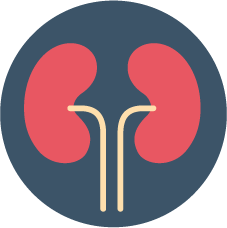
Paediatric nephrologist7,8
Often makes the initial diagnosis and usually coordinates medical care through adolescence
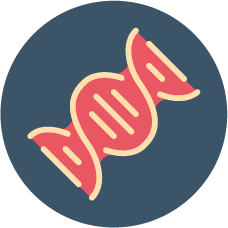
Human geneticist3,7
Confirms a cystinosis diagnosis through genetic tests and conducts genetic consultation and prenatal diagnostic tests
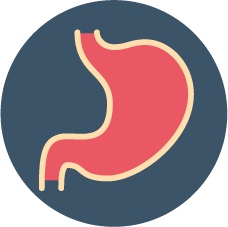
Gastroenterologist7
Manages gastrointestinal issues

Endocrinologist3
Evaluates the need for growth hormone therapy, treats hypothyroidism and diabetes mellitus

Ophthalmologist3,7
Monitors vision and eye health and treats ophthalmic complications

Adult nephrologist3,8
May assume the primary role in coordinating care at the appropriate time for the patient’s transition from paediatric to adult care

Neurologist3
Addresses neuromuscular problems, including swallowing difficulties due to myopathy, which generally appear in late adolescence
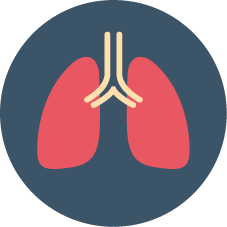
Pulmonologist8
Monitors change in pulmonary function

Cardiologist8
Evaluates cardiovascular risk and treats heart

Transplant surgeon3,7,8
Provides medical care before and after a transplantation. He/she also performs the kidney transplantation

Other specialists3,7
Provide additional services that many patients with cystinosis may require such as nutrition counselling, occupational therapy, speech therapy, behavioural nursing care, and medication management and instruction
A number of examinations are recommended for cystinosis patients in order to monitor disease progression. These include monitoring growth (in children), nutrition, metabolic control and cystine levels.3 In addition, adolescence presents specific issues, including treatment adherence, development of extrarenal disease, progression to end-stage kidney disease and the transition into adult care provision.8

Infants3,7–10
| Follow-up examinations | Recommendation |
| WBC cystine levels • At start of treatment • Patients stable on treatment | • Test every 2 weeks until dose adjustments are completed • Test every 3 months |
| Renal | • Biochemical effects of Fanconi syndrome need to be managed – Electrolytes and minerals – Polyuria – Evolving proteinuria • Recommend renal function assessments every 3 months |
| Growth and nutrition | • Recommend height and weight assessments every 3 months • May require growth hormone treatment |
| Neurological | • Neurocognitive tests are recommended • Specific school counselling and learning plans need to be optimised |
| Ocular | • Recommend annual checks for slit lamp biomicroscopy, intraocular pressure test, dilated fundus examinations |

Adolescents3,6–8,11
| Follow-up examinations | Recommendation |
| WBC cystine levels • At start of treatment • Patients stable on treatment | • Test every 2 weeks until dose adjustments completed • Test every 3 months |
| Ocular | • Recommend annual checks for slit lamp biomicroscopy, intraocular pressure test, dilated fundus examinations |
| Adherence | • Identify risk factors affecting adherence • Promote patient education and treatment support • Develop a patient support programme involving family members, friends and patient associations |
| Systemic nature of cystinosis | • Involve multiple specialists as needed (geneticists, endocrinologists, pulmonologists, cardiologists, neurologists, psychologists, speech therapists and social workers) |
| Renal | • Chronic kidney disease may advance • Kidney transplantation may be necessary • Dialysis may be required before transplantation |
| Endocrine system | • Check for hypothyroidism and diabetes mellitus • Check for hypogonadism • Physical examination for onset of puberty |
| Prepare for transition to adult care | • The process should begin mid-adolescence • Recommend that a care coordinator familiar with all aspects of the disease is employed |

Adults3,6–8,11
| Follow-up examinations | Recommendation |
| WBC cystine levels • At start of treatment • Patients stable on treatment | • Test every 2 weeks until dose adjustments completed • Test every 3 months |
| Systemic nature of cystinosis | • Involve multiple specialists as required that include endocrinologists, pulmonologists, cardiologists, geneticists, neurologists, social workers and psychologists |
| Ocular | • Recommend annual checks for slit lamp biomicroscopy, intraocular pressure test, dilated fundus examinations |
| Adherence | • Check cystine depletion therapy is continued |
| Systemic nature of cystinosis | • Involve multiple specialists as needed (geneticists, endocrinologists, pulmonologists, cardiologists, neurologists, psychologists, speech therapists and social workers) |
| Renal | • Chronic kidney disease may advance • Kidney transplantation may be necessary • Dialysis may be required before transplantation |
| Endocrine system | • Check for hypothyroidism and diabetes mellitus • Check for hypogonadism |
Figure adapted from Wilmer MJ, et al. Pediatr Nephrol 2011,3 Levtchenko E, et al. Clin Kidney J 2022,6 Langman CB, et al. Kidney Int 2016,8 Ariceta G, et al. Nefrologia 20159 and PROCYSBI® (cysteamine) Summary of Product Characteristics.11
It is important that a regular and consistent dosing regimen of cystine-depleting therapy is maintained.9 With adherence, this therapy is able to deplete WBC cystine levels by up to 95%.9 However, even brief delays (2–3 hours) in cystine-depleting therapy dosing can give rise to elevation of cystine above the recommended therapeutic threshold.10
Every year of good compliance to cystine-depletion therapy equates to 1 year of preserved kidney function.4
Adherence to cystine-depleting therapy is an issue, particularly in adolescence and adulthood. Reasons for this include dosage schedules, problems with tolerance, side effects, the need for polypharmacy, lack of motivation, effect on quality of life and inadequate transition of patients to adult care units. This suboptimal treatment pattern puts older cystinosis patients at risk of disease progression.9
For nephropathic cystinosis patients, transition from paediatric to adult care can be difficult. When patients reach adult age, they are usually transferred from the paediatric expert centre to a local hospital with limited experience in cystinosis, while the systemic manifestations continue to progress and the disease becomes more complex.9
The multidisciplinary care and connected transition from paediatric to adult care is recommended to reduce the impact of the disease and improve prognosis and patient quality of life.6,8 The adult nephrologist should act as the mediator between different members of the multidisciplinary team to ensure optimal communication and cooperation.8
Explore the sections below to find out more.
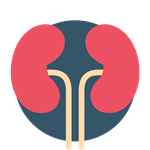



General management
Recommendations for management and monitoring of cystinosis patients

